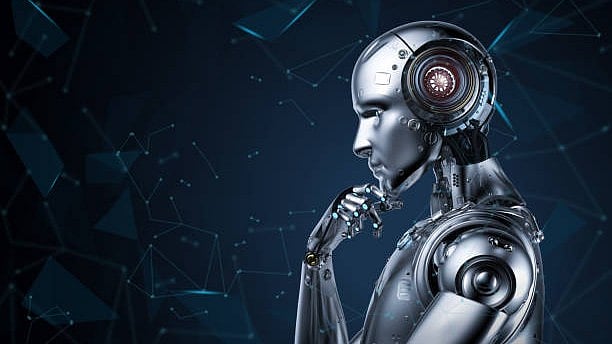
Image for representation.
Credit: iStock Photo
With the modern world being increasingly shaped by the rapid growth and advancement in groundbreaking Artificial Intelligence (AI) and futuristic technologies, self-sufficient, humanoid robots might not remain science fiction anymore.
Scientists and researchers at the TU Wein University in Vienna, Austria might have just taken the next step forward, as they have designed an independent and self-sufficient housecleaning robot, that can ease the burden of humans by assisting them in their day-to-day activities, according a report by Interesting Engineering.
A group of researchers at TU Wein has created a self-learning robot that can imitate people to perform basic chores like washing sinks, and cleaning the floor of the house. After all, at the end of a long and tiring day, who would not want a friendly helping hand completing the mundane daily chores of their house?
At first thought, a robot being able to clean your house might not sound that astonishing. However, this invention is very crucial because it is extremely difficult to program a robot to slide a sponge over the intricately curved edges of a sink. The team at TU Wein successfully cracked it. In order to train robots to perform a certain task, the researchers maneuvered a workaround by combining observation with tactile input from human teachers.
Soon, the scientists plan to use these robots for tasks outside the house as well. The robots may learn other activities such as sanding, painting, polishing surfaces, and applying adhesives using the same method, as per the researchers.
Speaking about the importance of this invention, professor Andreas Kugi, a member of the Automation and Control Institute at TU Wien University, said, “Capturing the geometric shape of a washbasin with cameras is relatively simple. But that’s not the crucial step. It is much more difficult to teach the robot which type of movement is required for which part of the surface. How fast should the motion be? What’s the appropriate angle? What’s the right amount of force?”
"In a workshop, someone might look over the apprentice’s shoulder and say, 'You need to press a little harder on that narrow edge'. We wanted to find a way to let the robot learn," said Christian Hartl-Nesic, chief of the Industrial Robotics group in professor Andreas Kugi’s team.
